Daymakers Alpine Touring Adapters
Test Location: Crested Butte, Colorado
Days Tested: 11
Boot Sole Length Size Range: 275–350 mm (roughly Mondo size 23-31)
Blister’s Measured Weight (per adapter): 737 & 740 grams
Climbing Levels: -3°C, 10°, 18°C
MSRP: $369
Boots Used: Nordica Strider 120, Dalbello Lupo Pro HD, Full Tilt First Chair 10, Tecnica Zero G Tour Pro
Bindings Used: Tyrolia AAAttack2 13 AT & Marker Griffon
Ski Used: Kye Shapes Numinous, Line Sir Francis Bacon, K2 Reckoner 102, Prior Northwest 100
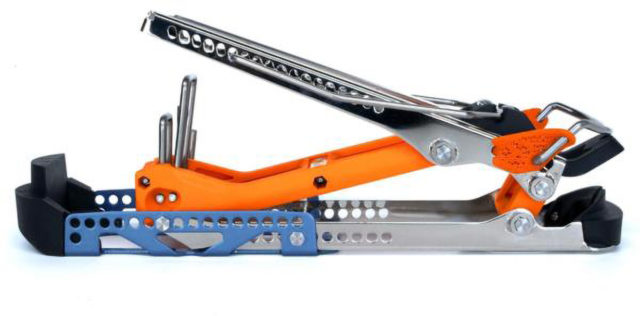
Intro
Daymaker Touring was started by professional skier & mechanical engineer, Giray Dadali (aka, “Ahmet’s Brother”), and skier, biker, & industrial designer, Chris Tunek.
Their goal was to create an alpine touring option that let you ski hard in full DIN-certified bindings, that didn’t require drilling new holes in your skis or boots, and that was lightweight, compact, and reliable for days in the backcountry.
The result is the Daymaker Touring Adapter. Its name is a deliberate nod to the old Alpine Trekkers adapters, which had earned by many people the nickname, “daywreckers.” The two share some core functionality similarities — both let you skin up and ski down in your regular alpine bindings. But Daymaker Touring wanted to take that original concept and improve it so that it makes your day, rather than wrecks it (… get it?).
Given the constantly evolving status of the alpine touring industry, there are now a ton of great options for getting yourself uphill and skiing downhill, depending on your priorities. Eric Freson and I have been using the Daymaker Touring Adapters throughout the season around Crested Butte, so here we’ll discuss how they’ve performed, how they compare to the competition, and who we think makes the most sense for these adapters.
Design
In theory, the Daymaker Adapters are pretty straightforward: you strap them to your ski boots, step into your regular ‘ol alpine bindings, and you can then walk uphill. But there’s a lot more to it, and in addition to our thoughts, I’m including a few very quick and informative videos from Daymaker for visual examples.
4-Bar Linkage
Luke Koppa: First and foremost, one of the key differences between the Daymakers and nearly all other touring bindings is that the Daymaker Adapter does not use a single pivot point, and instead uses a 4-bar linkage (apparently inspired by mountain bike suspension designs). Daymaker says that this linkage provides three main benefits: natural walking motion, improved traction, and torsional rigidity.
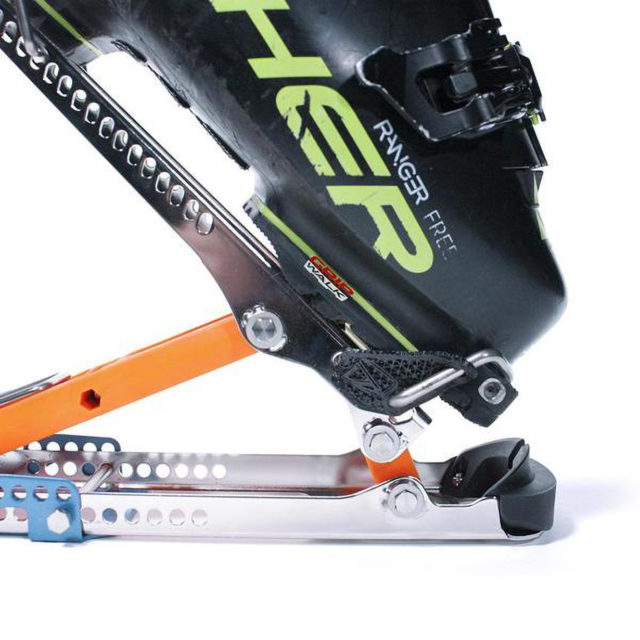
I can attest to the more natural walking motion claim — I’ll say more about this later, but I much prefer the natural stride I get with the Daymakers vs. a frame binding (e.g., Tyrolia AAAdrenalin, Salomon / Atomic Guardian, Marker Baron / Duke, etc.).
Daymaker says that their adapters allow for better traction while skinning since the linkage spreads out your weight across most of the adapter platform (i.e., about the length of your foot) rather than a single point around your toe. They emphasize this difference particularly on steep skin tracks, where, in a traditional frame or tech binding, most of your pressure is right under your toe while you’re moving your ski uphill, and then you only spread out that pressure once you rest your heel on the heel piece / heel riser. With the Daymaker Adapters, they say the pressure is always distributed along the linkage and therefore spread out more uniformly throughout the entire stride, rather than only when you put your heel down.
And finally, the 4-bar design is also meant to make the Daymaker Adapters more torsionally rigid, especially compared to the old Alpine Trekkers, which were pretty terrible in that regard.
Climbing Risers
Luke: Daymaker says their touring adapters’ “neutral” mode is actually -3° from flat, with the idea being that it’ll counter the forward lean in most boots, and especially boots without a walk mechanism, in order to make for a more comfortable stride in the neutral position. That said, and after using the adapters with both regular, no-walk-mode alpine boots and touring boots with walk modes, the “neutral” mode just feels nice to me (and in no way like I’m leaning back too much).
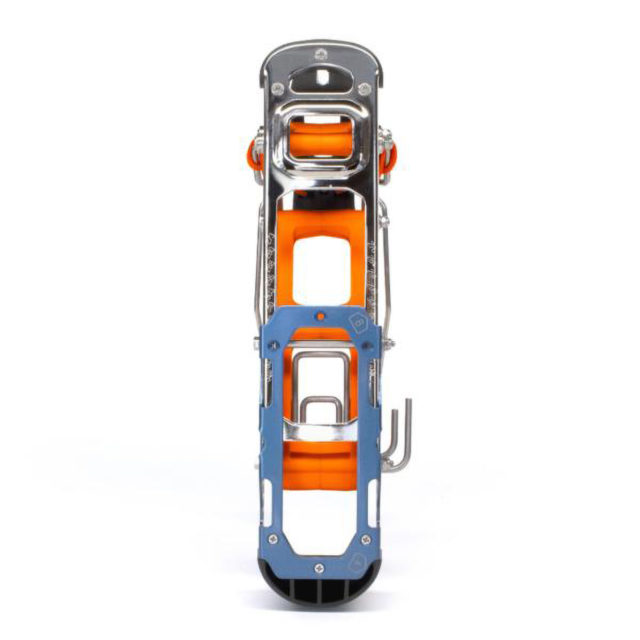
Then the Daymaker Adapters have two climbing risers, which reportedly equate to 10° and 18°, respectively. The risers are pretty simple metal bars that extend on the outside of the adapter. They’re very easy to flick up with your hands, and I’ve become pretty efficient when it comes to flicking them up or down with the handle of a ski pole. They’re not as foolproof and super easy best-in-class AT binding risers like G3’s, but I had few complaints about the risers after using the adapters just a couple of times.
Boot to Adapter Setup & Compatibility
Luke: When purchasing the Daymaker Adapters, you can select to have Daymaker set them up for you by providing your boot sole length (aka, “BSL”) and the alpine bindings you’ll be using.
If you decide to set them up yourself, end up using boots with a different BSL or different soles, or switch bindings, there are a few things you’ll need to adjust. This process has only taken me about 15 minutes, and once you’ve got them adjusted for your setup, there’s no need for further adjustments.
Daymaker put together an intuitive guide to adjusting their adapters, which you can check out here. To very briefly summarize, you’ll need to:
- Adjust the orientation & attach the heel lug, depending on your boot sole length
- Align the blue heel plate with the main silver plate, depending on your BSL
- Insert two bolts with included hardware and wrenches
- Set the toe bail position, depending on your bindings
- Set the heel bail position, depending on your BSL
All in all, the Daymaker setup is definitely more complex than, say, just adjusting the forward pressure on the heel of a tech or frame binding to work for a smaller or larger BSL, but again, you’ll only have to do this once if you’re using the adapters in the same boot / binding setup.
In terms of compatibility, the Daymaker Adapters are set up to work out-of-the-box with boots with regular, ISO 5355 alpine soles or GripWalk soles. If you intend to use them with GripWalk soles, Daymaker asks that you note so in the order comments and they’ll then ship you longer GripWalk toe bails. If you want both the alpine toe bails and GripWalk toe bails, it’ll cost you $10 extra dollars when purchasing the adapters, or $15 if you purchase the extra set of toe bails afterward.
We’ve been using both the standard toe bails and GripWalk toe bails and they’ve worked seamlessly with alpine and GripWalk soles, respectively.
As for boots with full-rubber, rockered, ISO 9355 touring soles, it depends. I’ve been able to get a pretty good fit with the full-rubber soles of the Tecnica Zero G Tour Pro and the Daymaker’s GripWalk toe bails, though it doesn’t feel quite as secure compared to boots with alpine or GripWalk soles. Given that the majority of more downhill-oriented touring boots seem to be getting GripWalk soles, and the fact that Daymaker Adapters will likely not be appealing to people who are counting grams, the less-than-ideal compatibility with full-rubber touring soles typically seen on lighter touring boots doesn’t seem like a huge issue, though it’s worth noting.
Adapter to Binding Setup & Compatibility
Luke: Daymaker says that their current adapters (as of fall, 2020) work with all alpine bindings from Marker, Rossignol, Tyrolia, Atomic, Salomon, and Knee. They say their adapters will work with all LOOK bindings except for the PX 15 and PX 18.
Once you’ve adjusted the Daymakers to your BSL, and assuming your bindings are set properly to that same BSL, all you have to do is attach the adapters to your boots and step into the bindings like you would without an adapter on your boot.
Weight & Packability
Luke: Our pair of the Daymaker Adapters are coming in at an average weight of 738.5 grams per adapter. That’s not particularly light. The weight of the adapters themselves is heavier than almost all tech / pin bindings on the market, and then with the Daymakers you also have to take into account the weight of your regular alpine bindings, all of which are also heavier than tech / pin bindings.
That said, you should also note the weight that you’re actually lifting up. Compared to frame bindings, Daymakers create less weight directly attached to your boots. Of course, you’re still moving the weight of the adapters and alpine bindings across the snow, but combined with the more natural stride of Daymakers, I think the decreased weight that you have to move up with your boot makes them better on the uphill than frame bindings.
It’s also worth noting that if you’re looking to use your AT setup to get to a booter that you’re then going to bootpack, you can leave the Daymakers at the bottom of the jump and not have the weight of them on your shoulder while hiking up, unlike frame bindings.
When they’re in my pack, especially when my pack is compressed as much as possible, I don’t really notice the weight of the Daymakers on the down. It basically feels like I added another 1-liter Nalgene water bottle that’s full of water.
So, the Daymaker Adapters aren’t very light. They’re also not teeny tiny in your pack, but they fold down pretty compactly for what they are. Fully folded with the heel bails cleanly slotted in the holes in the middle of the adapter, a single Daymaker set to a 305 mm BSL is about 24x8x5 cm (about 9.5x3x2 inches). Or about the size of a phone from the ’70s. Or about half the overall volume of a 1-liter Nalgene water bottle. Or about the length and width (and about half the depth) of a 1-lb bag of unground coffee. The packed-size length of the adapters will change with your BSL.
With my standard touring gear, I have no trouble adding the Daymakers to my typical 30-35 liter backpack, but I have to reevaluate what I put into my pack if I’m using a smaller bag. I usually stash the adapters in with my skins. You can attach them to the outside of your pack, but if you do so, Daymaker recommends removing the heel bails as they can come loose when they’re not attached to your boots.
Eric Freson: I did notice the weight. But what I noticed far more than the weight was the additional space I needed to allocate in my various packs for the Daymakers. If you are someone who carefully considers every item and carries the smallest-volume pack you can get away with, the adapters make for an added layer of complexity and it’s important to consider how it might impact your backcountry “system.” Conversely, if you are the type of person who wears a large pack and tends to not optimize your gear with extreme scrutiny, this quickly becomes a non-issue.
Walking / Uphill Performance
Luke: Alright, so how do these things actually go uphill? In short, I’d say quite well, but with several caveats.
As I alluded to above, I think the walking motion / stride the Daymaker Adapters provide is more comfortable than any frame binding I’ve used, and more comfortable than some tech bindings, at least for me. I doubt most people accustomed to skinning in tech bindings will find them more comfortable, in part due to the extra weight, and in part due to the fact that touring in Daymakers just feels different than tech bindings. If you’ve been happily touring in tech bindings, I doubt you’d prefer Daymakers on the up.
The pivot point on the Daymaker Adapters is closer to the ball of your foot, rather than in front of your toe like most touring bindings. Especially compared to frame bindings where the pivot point is much farther in front of your toe, I find that this makes for a stride that’s much more similar to just walking. It’s a bit difficult to describe, but overall I’d just call it “more comfortable” than frame bindings.
One thing I’ve noticed is that I find myself making shorter strides in the Daymaker Adapters than other touring bindings, I think because I don’t have to pivot my toe nearly as much in the Daymakers before I can start actually moving the ski forward. With tech and frame bindings, I usually have to get my toe / boot to nearly 90° or farther past flat before I start actually driving the ski forward. This took a quick adjustment on my part as trying to do really long strides in Daymakers makes the ski lift up more than in other touring bindings. But basically every backcountry skier I’ve ever talked to has told me shorter strides are better, and I haven’t found this to be a limiting factor, so I’d consider this a plus in my book. Your mileage may vary based on your body, stride, preferences, etc.
Kick turns in the Daymaker Adapters have been pretty straightforward for me. While kick-turning, I can feel a bit of lateral play (more noticeable with very heavy skis), but not so much to cause any notable issues. And as someone who’s used to kick-turning skis with near-center mount points, I haven’t really noticed the more rearward pivot point of the Daymakers.
My main complaints with the Daymaker Adapters come down to their stack height. Skinning relatively straight uphill or on a skin track with a defined, flat track has been totally easy and overall just feels “normal.” In these scenarios where I’m not putting much lateral stress on the adapters, they’re great.
But when the skin track is steep (35°+), firm, and you have to cut across that steep and firm snow and put a lot of pressure on your uphill edges, the Daymaker Adapters stack height is more noticeable. With very properly cut skins where the base of the ski is fully covered and the edges are not, I have still been able to skin up steep, firm slopes with these adapters. I don’t feel as confident as I do in these scenarios with a tech binding, but I’d say the Daymakers are similar if not better than most frame bindings in this case. If I’m using skins that don’t fully cover the base near the edges, it’s more difficult. Skins that don’t fit your skis will always cause an issue in this case, but I find it a bit easier to really dig in the edges of my skis with a tech binding vs. Daymakers.
So, among other reasons (namely weight & bulk), the Daymaker Adapters would not be my top pick for longer spring days where I’m likely to be cutting across steep, firm slopes on the way up. They’ve been great in powder, any sort of softer snow, and / or mellower skin tracks.
On that note, let’s talk about icing. The Daymaker Adapters have tons of places for snow and ice buildup, though personally, this has not been an issue during my time in them. I’ve mostly been using them in fairly firm and / or shallow conditions. When skinning and lapping jumps in spring, slushier snow, I’ve had some snow build up within the adapters, but knocking it out with a gloved finger or ski-pole tip has been quick and easy. And while there are lots of nooks and crannies for snow to stick to, there are also a lot of open slots and holes in the adapters, which makes snow / ice removal quite easy in my experience.
In other words, I think the Daymaker Adapters are a bit more prone to snow & ice buildup than most tech bindings, but they’re also easy to clear. And unlike most frame bindings, getting a bit of snow stuck to the bottom of the Daymakers has rarely prevented me from stepping into them or getting them into my alpine bindings. I’ve had to spend much more time clearing snow from beneath a frame binding (to get it to lock into ski mode) than I have knocking snow out of the Daymakers.
Eric: Luke hit all the main points I would have mentioned. But one additional thing I would address is that by moving the pivot point further pack, it does make kick turns in steep and / or deep conditions more challenging.
There is more ski in front of you (relative to the pivot point), but more importantly, that heel flick you probably use to raise the tip of your ski mid kick turn to get facing the other direction is more difficult to pull off with the pivot point being further back. You make adjustments, but I needed to be more precise and deliberate in these instances, as the fulcrum point for the ski was less ideal than the tech binding toe pieces I am normally using.
Transitions
Luke: The uphill-to-downhill transition in the Daymaker Adapters is extremely easy. Just flick open the heel bail (can be done easily with a ski pole), slide your boot out from the adapters, and step or press down on the heel piece of your alpine bindings to shoot the adapters out of your alpine bindings. Or, if you hate fun (or want to limit snow buildup in the adapters), you can gently release them from the bindings. But watching them flip out of the bindings is kinda cool…
The downhill-to-uphill transition is a bit trickier, and it depends a bit on the snow conditions.
If the snow is firm and / or shallow, I like to just balance on one foot, put the adapter on one foot, get that foot into the ski, and then repeat for the other ski / boot.
If the snow is soft and / or deep and I don’t want to accidentally lose my footing while an adapter is on my foot and therefore pack the adapter full of snow, I’ll take a different approach. In this scenario, I’ll put the toe piece of each adapter lightly into the bindings, then step into the adapters, tighten the heel bail, and step firmly into the bindings.
Just as with touring bindings, it’s important to knock snow off the soles of your boots before stepping into the Daymaker Adapters. You’ll also want to knock the snow off the toe welt of your boots.
Eric: I don’t hate fun, but I did get smoked in the face the first time I released the Daymaker out of my binding when transitioning to go downhill, so watch out for that. But overall the Daymakers were very easy to use. If you do find yourself in firm and steep situations (such as a big, wind-scoured couloir), an instance where you might be more likely to bring the Daymakers so you could use alpine bindings, you need to be very careful not to drop them. Sounds silly, but easy to do and in instances where they could get away from you in a hurry, it could be a real problem. I found I needed to be more deliberate when choosing my transition zones with the Daymaker as you are no longer paying attention to just one object under your foot.
Downhill Performance
Luke: These are not bindings, so you don’t actually ski in them. But it’s worth reiterating that the Daymaker Adapters let you ski in your regular alpine bindings. No higher stack height, no additional plates or attachments, just the alpine bindings you know and love for downhill skiing. While touring bindings, especially options like the Shift and CAST system, have gotten way better over the years when it comes to safety and downhill performance, I will still trust and prefer my standard alpine bindings over any sort of touring binding when it comes to skiing hard on the way down.
Eric: I didn’t ski much other than Alpine Trekkers and Salomon 916’s in the backcountry for many years. And it wasn’t because we didn’t like long walks. So, my bias here should be pretty obvious. But there is still nothing (save CAST, IMO) that compares to skiing downhill in an alpine binding.
Who’s It For?
Luke: Sometimes this section is straightforward, but in this case, it’ll require a lot of nuance.
The most obvious people who should not get the Daymaker Adapters are those people who place a higher priority on uphill, rather than downhill performance. If you mostly want to log a lot of vert, bag a bunch of big peaks, or are otherwise happy to deal with a poorer and potentially less-safe experience on the down in exchange for much more efficiency on the up, you’d be better off with a tech / pin setup. They’re way lighter, don’t take up space in your pack, and will still get you to the bottom.
Then there are the people who want a dedicated touring setup but who also ski fairly hard on the way down. These people will have to weigh their priorities. If you’re mostly looking to use this setup in very good, forgiving snow like powder and corn, you could definitely get away with a lighter tech setup that’d be easier on the up and just keep in mind that it won’t offer as reliable release characteristics and won’t be quite as good when it comes to power transfer and elasticity. Given all the great touring bindings on the market, I think most people looking for a dedicated touring setup will be better off in one of the various touring bindings, and I highly doubt tech-binding fans will find themselves converting to Daymakers, unless they’re specifically looking to add a hard-charging, shorter-day setup to their backcountry quiver.
With that said, there are several demographics for which the Daymaker Adapters could make a lot of sense.
I think Daymakers will be most appealing to people who don’t spend all of their time in the backcountry. The more time you spend riding lifts and the less money you want to put toward a dedicated touring setup, the more sense Dayamakers … make. Especially compared to tech / pin bindings, the Daymakers are much less expensive in that they’re $369 on their own, don’t require you to get a boot with tech fittings, and you can use them with the skis & bindings you already have. Given that most tech bindings are at least as expensive as Daymakers (often more), that a pair of new boots with tech fittings would set you back at least a few hundred dollars, and you might opt to get a dedicated touring ski that’d cost another several hundred dollars, that makes a strong case for Daymakers in this scenario.
It’s also worth noting that, if you’re interested in trying Daymakers, you can rent them for a week for $80 (US only), with that price including shipping both ways. And if you like them and want to purchase a pair, that rental fee will go toward the total price of the adapters.
Now, what about frame bindings? You could mount those on your alpine skis and use them with your alpine boots, just like the Daymakers. The main downside I see with Daymakers in this comparison is that they’re heavier (as a total system w/ alpine bindings) and take up more space in your pack. The main upside I see is that, personally, I think Daymakers make for a more comfortable skinning experience and they don’t leave you skiing downhill on bindings with high stack heights and more moving pieces to break.
If I were deciding between a frame binding and Daymakers, I’d personally opt for Daymakers since I prefer them on the up, I prefer skiing in regular alpine bindings on the down, and if I’m considering a frame binding, I’m probably not going to be doing super long tours in that setup. I don’t think those who already have frame bindings need to immediately go out and get Daymakers, but if you’re on a budget, like to ski hard, and are looking for a way to get into the backcountry, Daymakers are my current favorite option.
Finally, if what you’re looking for is a way to get up to some backcountry booters that don’t require super long approaches, the Daymakers are excellent, and especially if you want to use your alpine boots / don’t want to buy new boots.
Eric: I think it’s actually pretty straightforward… (jokes… Luke’s right). But really, I think it’s actually pretty straightforward. Is someone shooting video of you when you ski? Is this footage for someone other than Mom? If yes, then you should strongly consider Daymakers. If no, then, they probably aren’t necessary. They also do make a lot of sense if you only spend a handful of days touring each year. Or if you ski somewhere with lift-accessed, but gated sidecountry terrain that requires skiing back to the lifts.
Bottom Line
Eric: Daymaker Alpine Touring Adapters are a *huge* overall improvement over the old BCA Alpine Trekker, and if the Trekker had any redeeming qualities for you, Daymakers deserve real consideration. I do also think the Daymaker Adapters are niche tools … but I also think I kinda want a pair. Skiing big backcountry lines in your alpine gear is just so much more satisfying — I didn’t realize how much I had missed it. That said, if I did own a pair, I would likely only pull them out a couple of days a year for those times when we are filming, or skiing huge faces, or on super sketchy snow. If ~$360 seems reasonable when you are considering the subject of building a backcountry binding *quiver*, then you should probably consider them too.
Luke: I think Daymaker has done a very good job of making a viable touring option for people who want to ski very hard in the backcountry, those who can’t spring for a whole new boot / binding combo, or those who are just getting into the backcountry. While much lighter AT bindings will make sense for many people, the Daymaker Adapters certainly fill a void in the alpine touring market. And personally, I know we’ll be using them a lot this spring in order to extend our alpine-gear testing season.

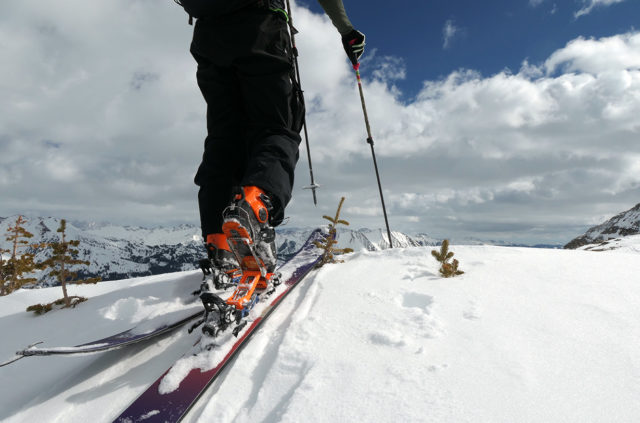
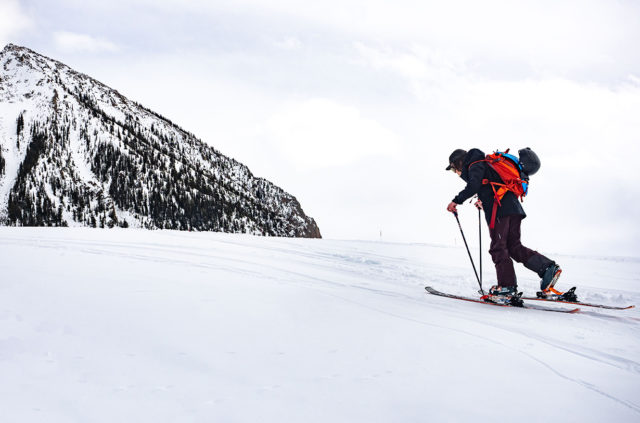
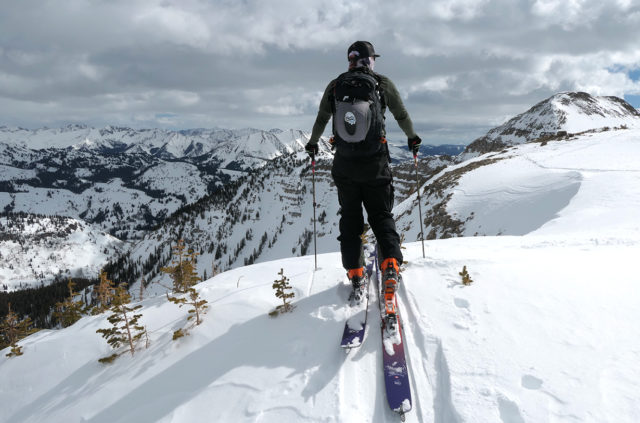
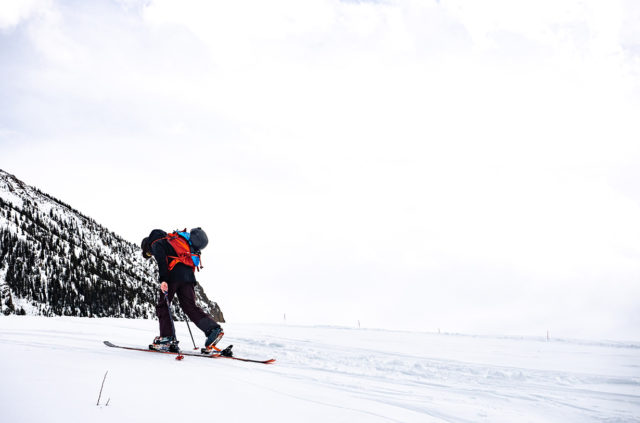
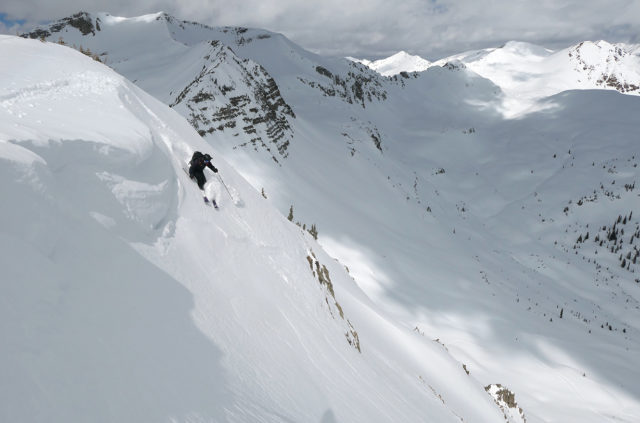
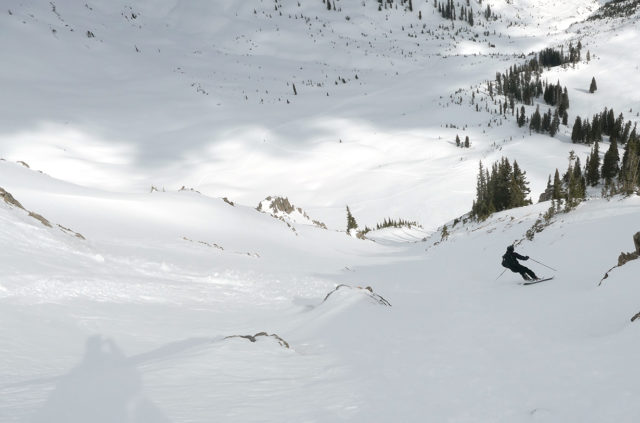
As recently as a couple months ago I would have said that the Daymaker is completely pointless, but then the AFD on one of my Shifts started clicking and noticeably “collapsing” when driven on hard snow, and I couldn’t fix it by the usual trick of carefully advancing the adjustment screw a bit beyond where the AFD “steps”. I took it apart, and found obvious wear on the surfaces of that ratchet mechanism. I’ve heard that the Kingpin and Tecton can also develop issues under similarly hard use.
I think that for a big rider (I’m 220 lb) who likes to load up the shovels there’s something to be said for solutions like this or CAST. As you say it’s sort of a niche, but it’s real.
FWIW I went the opposite direction: I remounted the skis in question with alpine bindings and invested in a dedicated pair of similar-width touring skis (Ravens) with lowtech bindings (ATK Raiders). I have no illusions that the Raiders would fare very well under the sorts of loads that wore out the Shifts, but I don’t ski that hard in the backcountry. My problem was that I tried to ride the same binding for both, and if somebody like me insisted on doing that then I could see the Daymaker making sense.
I did buy extra freeride spacers for the Raiders because they use a similar “step” mechanism as the Shift AFD, I expect to clobber them sooner or later, and they’re cheap and easily replaceable. The design of that spacer is one of the things that drew me to the Raider. It’s a “sliding heel AFD” that takes most of the vertical load for the (much more expensive and difficult to replace) heel tower.
I do like the idea of the 4 bar linkage. Any cross country skier knows you don’t push off with your tip toes. Doing so reduces grip, and creates a strange stride. After all, walking and running, you bend your foot, and push off from the ball of the foot at first. Even the lightest rando racing boot, with great ankle mobility still suffers from this.
I can also see a benefit in retention over the Alpine Trekkers. My daughter used the Camp kids version of those two years ago, and the adapter kept popping out of the binding when she fell. Most likely becasue the pivot at the toe was open, leading to about double the length of lever on the ski binding. This design would seem to reduce that?
Still, for most people who want to go touring, I think we are still better off with tech bindings and true AT boots.
What does “true AT boot” mean?
The Lange XT 140 has lowtech fittings and a walk mode, but I can tell you from experience that it’s burly enough to enable a big or aggressive skier to lay waste to some tech bindings (I was using those and Raptor 140s when I wore out a Shift AFD). I could easily see somebody using that sort of boot, Daymakers, and an alpine rig under some circumstances. As Eric says, “footage that’s not for Mom” is one scenario. Ditto for somebody who can only have one pair of boots and skis due to cost/space/whatever constraints. As an example of “space” constraints, I would have killed to have AT adapters and skins in my luggage on Sunday when everything shut down around me.
I have a pair of Daymakers and really like them for the purpose I got them for: side country missions with about 30-60 minutes of skin time but still on a real binding for the resort. I have dedicated touring skis with Dynafit, but I hate skiing with them in area. I’m a big guy and would destroy Shifts on moguls. Daymakers let me use my alpine boots to sneak in one more powder run out the gates after the area is skied up. CAST is the only other setup I’d trust for that purpose, but I’d have to send in my alpine boots to get tech toes installed. And frankly, plate bindings suck to ski or tour on.
The extra weight in the pack kinda sucks and I may eventually getCAST for that reason, but I will stick with them for now.
Somebody needs to make an adapter like this but instead of being for touring it’d be an NTN telemark binding. Slot into alpine binding, but have springs and pivot and telemark NTN duckbutt.
If your alpine boots don’t have a walk mode, will the Daymakers be worth getting? Do you need a walk mode (releasable cuff) to feel comfortable going up or if you just unbuckle your top two buckles is it reasonably comfortable. I see no rearward ROM as being and issue with your stride. Luke, you mentioned the stride is different and shorter with Daymakers, does that mitigate lack of ROM some? I am looking at climbing a 1000′ ski area slope for some laps now that everything is shut down.
I think for 1000′ of vert, an alpine boot would be fine. For shorter laps I’ve been using them with my alpine boots or the Nordica Strider not in walk mode (upper buckles unbuckled) and it’s actually pretty comfortable. I do think the shorter stride and slightly negative “neutral” stance of the Daymakers does help to mitigate the lack of range of motion in alpine boots, definitely more comfortable than trying to take long strides in a frame binding while using boots without a walk mode.
It wasn’t long ago that people were getting after fairly big objectives with DayWreckers and alpine boots, so yeah, 1000′ shouldn’t be a problem.
Of course we also hiked uphill *both* ways while breaking trail through shoulder-high powder every time back then :-).
I’ve been using them this season with alpine boots (no touring mode) with no problems: they are surprisingly comfortable touring. It’s the negative angle combined with the virtual pivot point that gives it a really normal stride feel.
Great product. I picked up a pair of Daymakers after the lifts closed. Use them a few times a week at Alta and PC with regular alpine boots. Average climb is about 1,500 feet according to Strava.
The only drawback I’ve noticed to using a Daymaker setup is that you have to carry them down. Today was 60 degrees and sunny. I stayed low on the mountain and wasn’t on terrain that had any avalanche risk. Although I didn’t carry any gear up, I had to take a duffel bag to put them in while skiing down. I guess I would have needed something to put my skins in anyway. I avoid wearing backpacks anytime possible because they make me sweat too much.
Personally I don’t like skinning up. My legs feel weird when I ski down. Similar to the bike/run transition during a triathlon. But it was a relatively inexpensive experiment.
I live in London UK. I have skiis and I would like to buy Daymaker Alpine Touring Adaptors.
Can you give me a cost price to include shipping?
I had the same question and found this https://www.daymakertouring.com/pages/international-orders
For European orders, please order directly from Klint Skis Norway